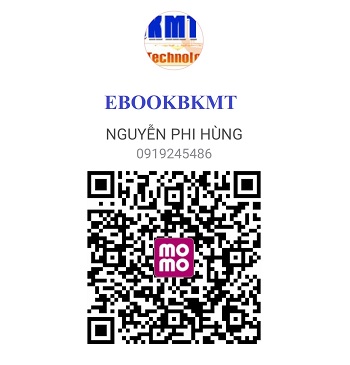EBOOK - Modern electric - Hybrid electric & Fuel cell vehicles (Mehrdad Ehsani)
The development of automobiles with heat engines is one of the greatest achievements of modern technology. However, the highly developed automotive industry and the large number of automobiles in use around the world have caused and are still causing serious problems for society and human life. Deterioration in air quality, global warming, and a decrease in petroleum resources are becoming the major threats to human beings.
More and more stringent emissions and fuel consumption regulations are stimulating an interest in the development of safe, clean, and high-efficiency transportation. It has been well recognized that electric, hybrid electric, and fuel cell-powered drive train technologies are the most promising solutions to the problem of land transportation in the future.
CONTENTS:
1. Environmental Impact and History of Modern Transportation ..............1
1.1 Air Pollution ............................................................................................2
1.1.1 Nitrogen Oxides ..........................................................................2
1.1.2 Carbon Monoxide ........................................................................3
1.1.3 Unburned Hydrocarbons ..........................................................3
1.1.4 Other Pollutants ..........................................................................3
1.2 Global Warming ......................................................................................4
1.3 Petroleum Resources ..............................................................................5
1.4 Induced Costs ..........................................................................................7
1.5 Importance of Different Transportation Development
Strategies to Future Oil Supply ............................................................9
1.6 History of Electric Vehicles ..................................................................13
1.7 History of Hybrid Electric Vehicles ....................................................15
1.8 History of Fuel Cell Vehicles ..............................................................17
References........................................................................................................19
2. Vehicle Fundamentals....................................................................................21
2.1 General Description of Vehicle Movement ......................................22
2.2 Vehicle Resistance ................................................................................23
2.2.1 Rolling Resistance ....................................................................23
2.2.2 Aerodynamic Drag ..................................................................25
2.2.3 Grading Resistance ..................................................................26
2.3 Dynamic Equation ................................................................................27
2.4 Tire–Ground Adhesion and Maximum Tractive Effort ..................29
2.5 Power Train Tractive Effort and Vehicle Speed ..............................31
2.6 Vehicle Power Plant and Transmission Characteristics ..................33
2.6.1 Power Plant Characteristics ....................................................34
2.6.2 Transmission Characteristics ..................................................36
2.6.2.1 Gear Transmission ....................................................37
2.6.2.2 Hydrodynamic Transmission ..................................39
2.6.2.3 Continuously Variable Transmission ......................43
2.7 Vehicle Performance ............................................................................44
2.7.1 Maximum Speed of a Vehicle ................................................45
2.7.2 Gradeability ..............................................................................46
2.7.3 Acceleration Performance ......................................................46
2.8 Operating Fuel Economy ....................................................................49
2.8.1 Fuel Economy Characteristics of Internal
Combustion Engines ........................................................................49
2.8.2 Calculation of Vehicle Fuel Economy ....................................50
2.8.3 Basic Techniques to Improve Vehicle Fuel Economy ..........52
2.9 Braking Performance ..........................................................................54
2.9.1 Braking Force ............................................................................54
2.9.2 Braking Distribution on Front and Rear Axles ....................55
References ......................................................................................................60
3. Internal Combustion Engines ......................................................................61
3.1 4S, Spark-Ignited IC Engines ..............................................................62
3.1.1 Operating Principles..................................................................62
3.1.2 Operation Parameters ..............................................................64
3.1.2.1 Rating Values of Engines ..........................................64
3.1.2.2 Indicated Work per Cycles and Mean Effective
Pressure ........................................................................64
3.1.2.3 Mechanical Efficiency ................................................66
3.1.2.4 Specific Fuel Consumption and Efficiency ............67
3.1.2.5 Specific Emissions ......................................................68
3.1.2.6 Fuel/Air and Air/Fuel Ratio......................................68
3.1.2.7 Volumetric Efficiency ................................................69
3.1.3 Relationships between Operation and Performance
...
LINK DOWNLOAD
The development of automobiles with heat engines is one of the greatest achievements of modern technology. However, the highly developed automotive industry and the large number of automobiles in use around the world have caused and are still causing serious problems for society and human life. Deterioration in air quality, global warming, and a decrease in petroleum resources are becoming the major threats to human beings.
More and more stringent emissions and fuel consumption regulations are stimulating an interest in the development of safe, clean, and high-efficiency transportation. It has been well recognized that electric, hybrid electric, and fuel cell-powered drive train technologies are the most promising solutions to the problem of land transportation in the future.
CONTENTS:
1. Environmental Impact and History of Modern Transportation ..............1
1.1 Air Pollution ............................................................................................2
1.1.1 Nitrogen Oxides ..........................................................................2
1.1.2 Carbon Monoxide ........................................................................3
1.1.3 Unburned Hydrocarbons ..........................................................3
1.1.4 Other Pollutants ..........................................................................3
1.2 Global Warming ......................................................................................4
1.3 Petroleum Resources ..............................................................................5
1.4 Induced Costs ..........................................................................................7
1.5 Importance of Different Transportation Development
Strategies to Future Oil Supply ............................................................9
1.6 History of Electric Vehicles ..................................................................13
1.7 History of Hybrid Electric Vehicles ....................................................15
1.8 History of Fuel Cell Vehicles ..............................................................17
References........................................................................................................19
2. Vehicle Fundamentals....................................................................................21
2.1 General Description of Vehicle Movement ......................................22
2.2 Vehicle Resistance ................................................................................23
2.2.1 Rolling Resistance ....................................................................23
2.2.2 Aerodynamic Drag ..................................................................25
2.2.3 Grading Resistance ..................................................................26
2.3 Dynamic Equation ................................................................................27
2.4 Tire–Ground Adhesion and Maximum Tractive Effort ..................29
2.5 Power Train Tractive Effort and Vehicle Speed ..............................31
2.6 Vehicle Power Plant and Transmission Characteristics ..................33
2.6.1 Power Plant Characteristics ....................................................34
2.6.2 Transmission Characteristics ..................................................36
2.6.2.1 Gear Transmission ....................................................37
2.6.2.2 Hydrodynamic Transmission ..................................39
2.6.2.3 Continuously Variable Transmission ......................43
2.7 Vehicle Performance ............................................................................44
2.7.1 Maximum Speed of a Vehicle ................................................45
2.7.2 Gradeability ..............................................................................46
2.7.3 Acceleration Performance ......................................................46
2.8 Operating Fuel Economy ....................................................................49
2.8.1 Fuel Economy Characteristics of Internal
Combustion Engines ........................................................................49
2.8.2 Calculation of Vehicle Fuel Economy ....................................50
2.8.3 Basic Techniques to Improve Vehicle Fuel Economy ..........52
2.9 Braking Performance ..........................................................................54
2.9.1 Braking Force ............................................................................54
2.9.2 Braking Distribution on Front and Rear Axles ....................55
References ......................................................................................................60
3. Internal Combustion Engines ......................................................................61
3.1 4S, Spark-Ignited IC Engines ..............................................................62
3.1.1 Operating Principles..................................................................62
3.1.2 Operation Parameters ..............................................................64
3.1.2.1 Rating Values of Engines ..........................................64
3.1.2.2 Indicated Work per Cycles and Mean Effective
Pressure ........................................................................64
3.1.2.3 Mechanical Efficiency ................................................66
3.1.2.4 Specific Fuel Consumption and Efficiency ............67
3.1.2.5 Specific Emissions ......................................................68
3.1.2.6 Fuel/Air and Air/Fuel Ratio......................................68
3.1.2.7 Volumetric Efficiency ................................................69
3.1.3 Relationships between Operation and Performance
...
LINK DOWNLOAD
%20(1).png)

.png)

%20(1)%20(1).png)







%20(1).png)








Không có nhận xét nào: